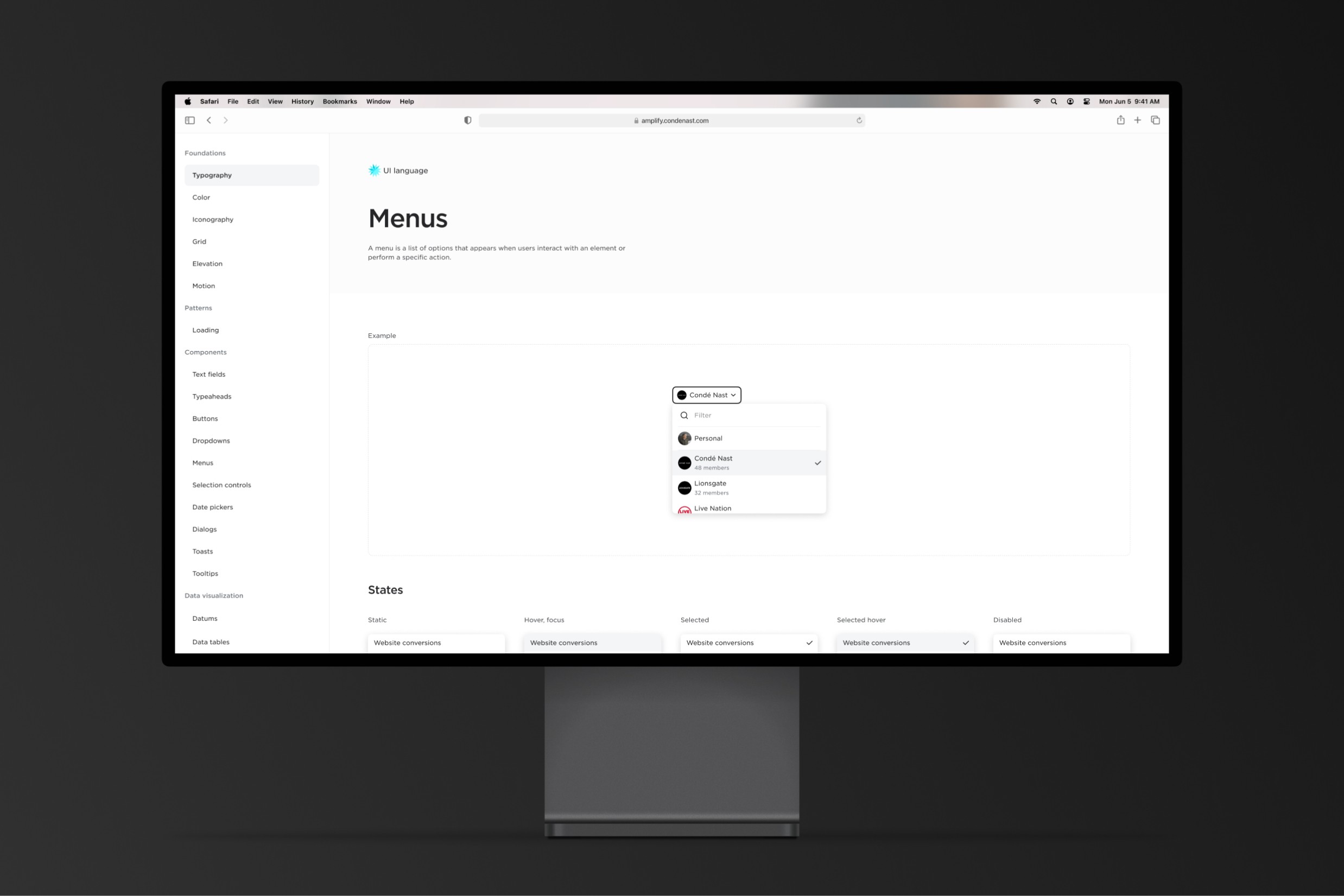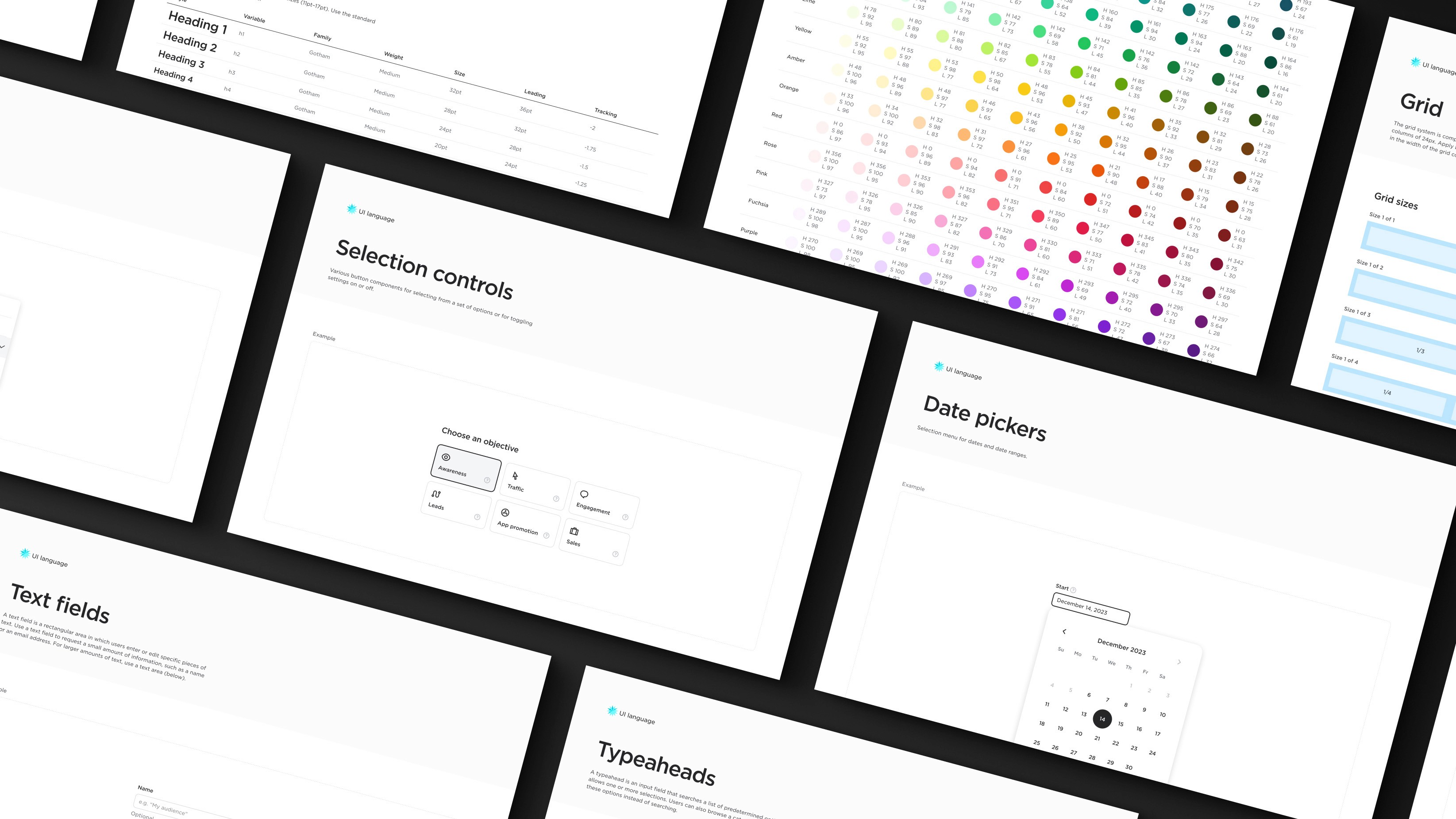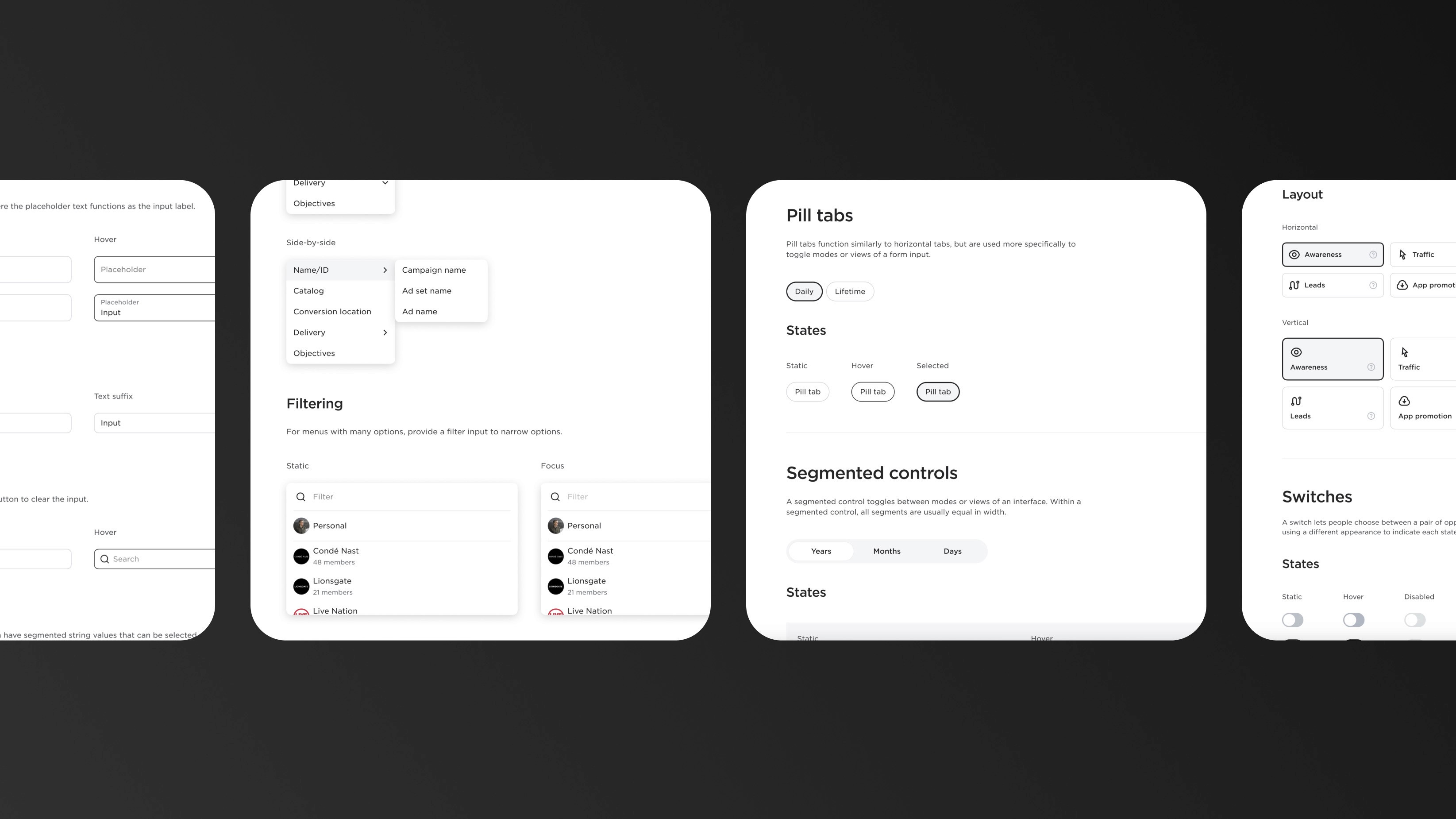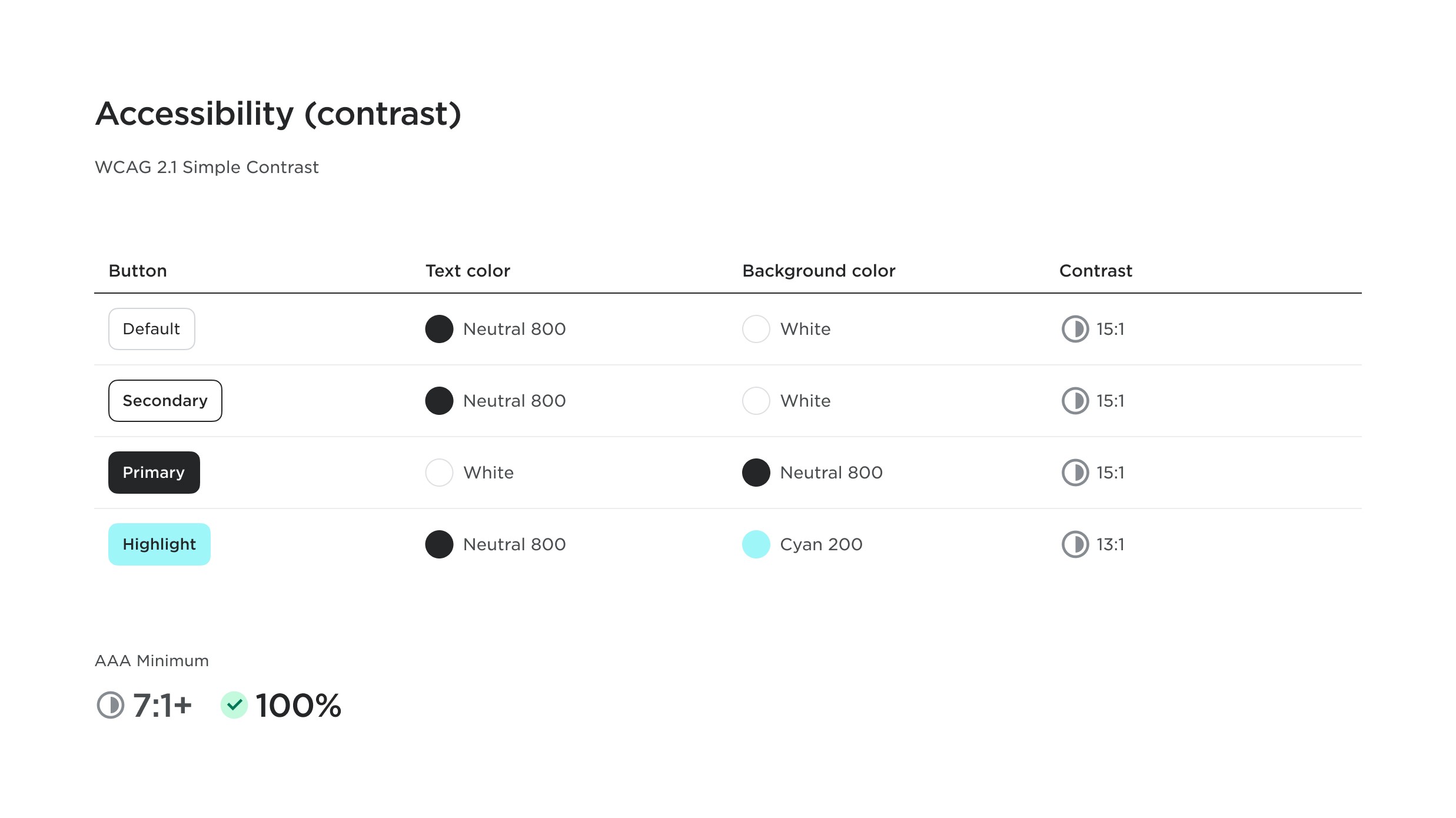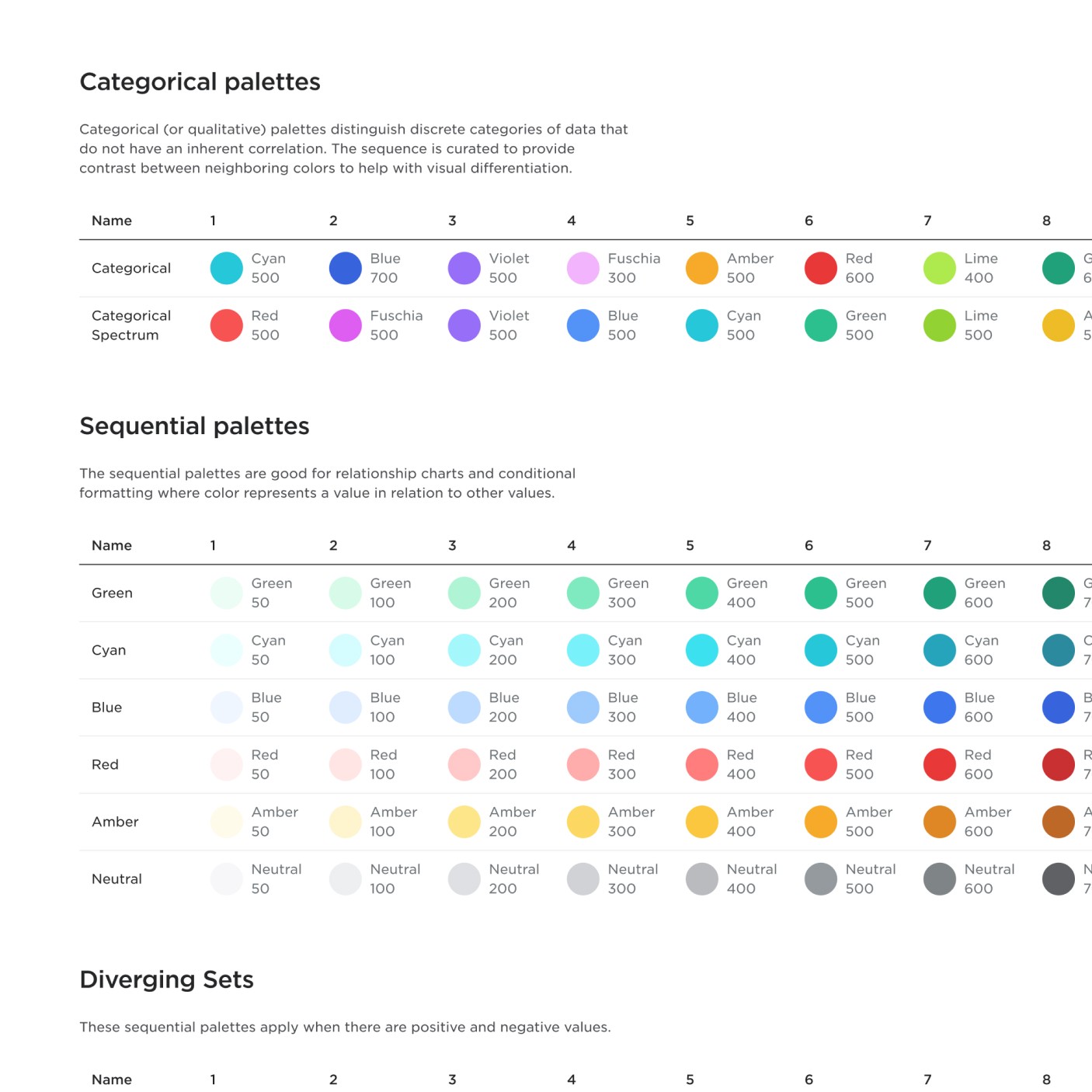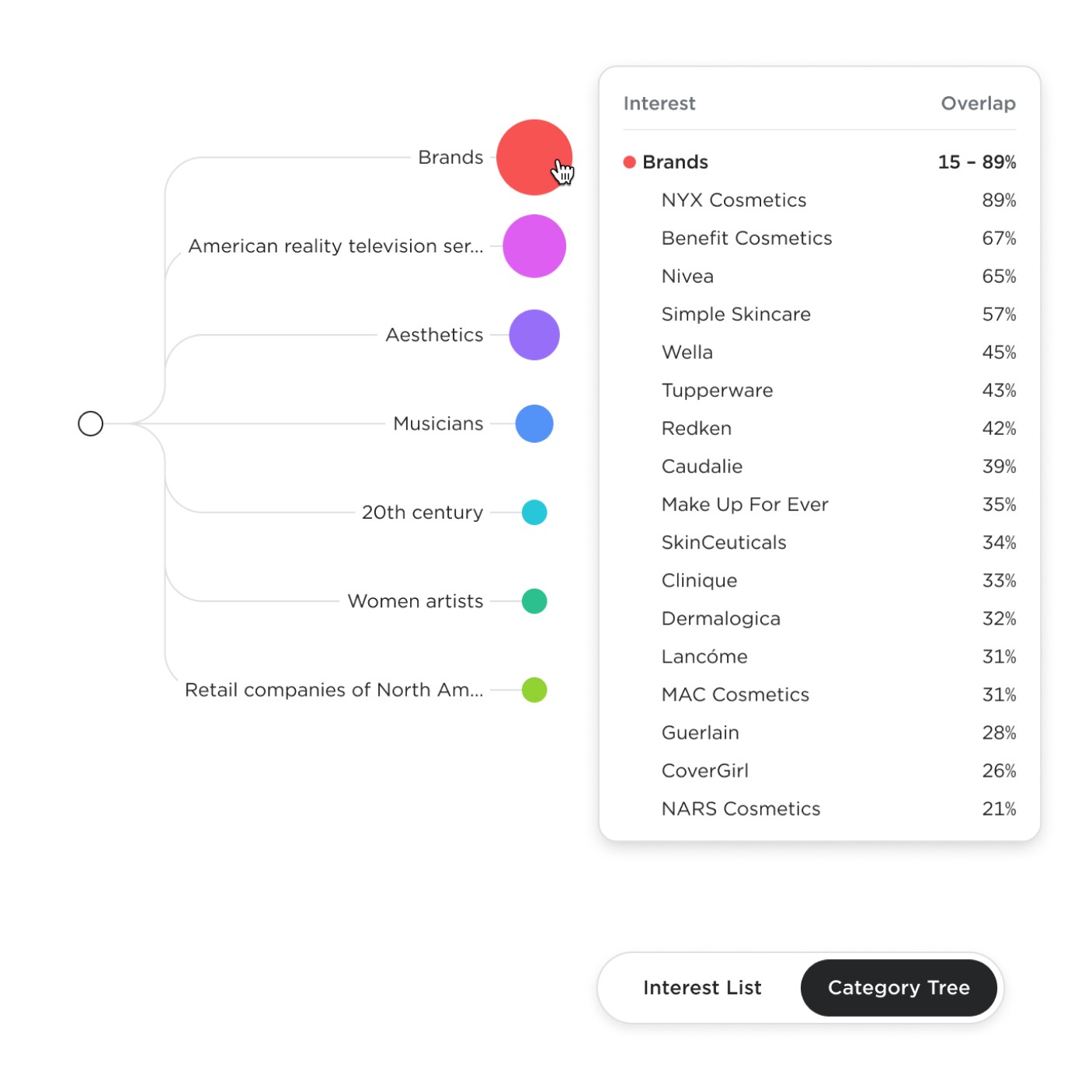The challenge
To account for the capabilities of this platform, the design system needed to facilitate heavy data input, robust asset management functionality, and versatile data visualization. The UI language also needed to adhere to accessibility standards, as well as match the clean and elegant aesthetics Condé Nast promotes. Personally, I also set out to create a system that is easily approachable for the product team, so that components could be easily implemented and maintained within a small team structure.
Solutions
Laying the foundations
Stylistically, the approach I took was to create a sleek, minimal, high-contrast set of UI elements that hints at a sense of high-tech/AI. In documenting the system, the essential foundations of type, color, grid/spacing, elevation and motion were laid out, and a set of common variables — such as standard font sizes, colors, border radii, etc… — were defined. In creating the UI controls, I took into consideration the heavy form input the interface will cater to and made sure to create clear states for when users had added input to fields, so that scanning long forms for specific information would be easier. Generally, input and selections stand out by dark outlines and/or light grey backgrounds.
Additionally, I put an emphasis on accounting for accessibility guidelines by checking color contrasts and including focus states for keyboard navigation. All form elements were given clear labels, and guidelines were put in place for tooltips and other user assistance. The system was developed using semantic HTML and interfaces created with this system were verified to meet WCAG guidelines.
Accounting for heavy input requirements
The platform’s interfaces required a large variety of form input controls — long, nested selection menus, various ways to search, sort and filter, and fields that accommodate many entries. For the latter requirement, I created a custom component, named a “typeahead”, and these fields were frequently used for various multi-entry instances, such as entering audience interests, demographics, social media pages, and more. When users focus into the field, a menu of possible options or categories appear until the user starts typing, at which point search results appear. Users may enter and select one or more options at time, and selected options are categorically added above the field and are removable.
Including data visualization guidelines
The ads manager platform also provided rich reporting on campaign performance, so a set of flexible tables, charts and other data visualization was included in the UI components. For these components, I defined additional color systems (categorical, sequential, divergent, etc) and other chart-specific guidelines.
Impact
Affinity UI successfully provided a comprehensive set of UI components, patterns and guidelines to rapidly build out cohesive interfaces within Condé Nast's Affinity ads management system. A personal goal of mine was to try to get other teams within Condé Nast Data Products to adopt and share this design system, as well. This however proved difficult when considering the consolidation of different codebases, though such consolidation may still be achieved in the future. Nonetheless, the design system continues to provide a crucial foundation and source-of-truth for Condé Nast ad campaign management globally.
